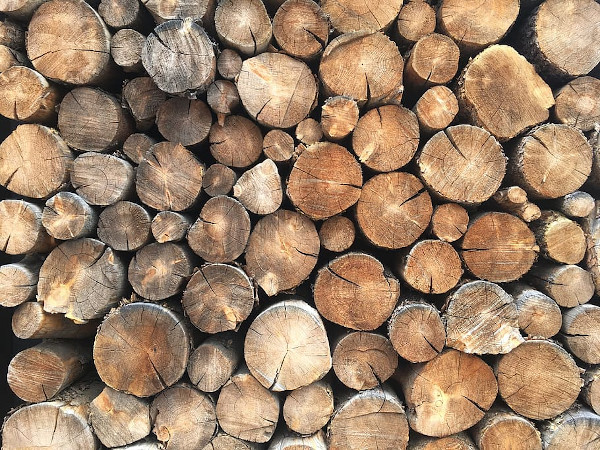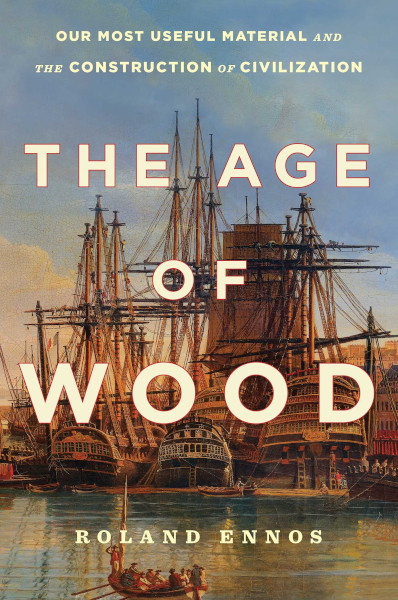Before Fire, There Was Wood in Roland Ennos’s ‘Age of Wood’

The Age of Wood: Our Most Useful Material And the Construction of Civilization
By Roland Ennos
Scribner
336 pages
Here are some interesting facts about wood from Roland Ennos, a visiting professor of biological sciences at the University of Hull:
- Wood is lighter than water.
- Weight for weight, wood is comparable to steel in strength and toughness.
- Wood can be employed to hold up houses, “yet can be cut up into tools as small as a toothpick.”
In his new, comprehensive book, The Age of Wood, Ennos attempts to disprove the prevailing conventional wisdom that wood “is little more than an obsolete relic from our distant past.” Towards that end, he ranges far and wide, calling upon findings from archeology, geography, geology, and biomechanics, as well as the long history of human culture.
It’s an ambitious project, and one that largely succeeds in making the case for wood’s central place in the progress of civilization.

Take, for example, the prehistoric use of wooden tools. Contrary to popular belief, it was apes, rather than early hominins (primates closely related to humans) that first used tools in the form of sticks for digging, spears for hunting, and nests for shelter. Hominins quickly caught on, as Roland notes:
“… even the reconstructions of the lives of early hominins that have been made by devotees of stone make it obvious that they used mainly wooden tools—to hunt animals, to dig up plant roots, and to construct shelters—and that they burned wood to keep off predators, keep themselves warm, and cook their food.”
From these early times, the author tracks corresponding advances in the use of wood with progress in society, both in peacetime and at war. Its use led to development of other key “building blocks” of civilization—cast iron, wrought iron, concrete, etc. Today, wood continues its usefulness in a variety of forms, such as laminated wood, plywood and wood pulp.
At the same time, wood—in its “original” state as trees—has been adversely affected by global climate change and other environmental factors. This has led to wildfires of unprecedented fury and reach, including the megafires in Australia in 2009 that generated an inferno of hellish proportions, eventually covering more than 100 million acres.

What comes across most vividly in this panoramic study of wood is Roland Ennos’s love of the subject. This grows out of a simple, but compelling idea:
“It became clear to me that wood has actually played a central role in our history. It is the one material that has provided continuity in our long evolutionary and cultural story, from apes moving about the forest, through spear-throwing hunter-gatherers and ax-wielding farmers to roof-building carpenters and paper-reading scholars.”
A last fact about wood: At present, it’s estimated that greater than 3 trillion trees still thrive around the world, and blanket roughly 30 percent of the planet. Although, as Professor Ennos would have us believe, there are plenty more facts where that came from.
Author Bio:
Lee Polevoi, Highbrow Magazine’s chief book critic, is the author of The Moon in Deep Winter, a novel.
For Highbrow Magazine
Image Sources:
--Fir0002 (Wikipedia, Creative Commons)
--Pxfuel (Creative Commons)
--Scribner































































































































































































































































































































